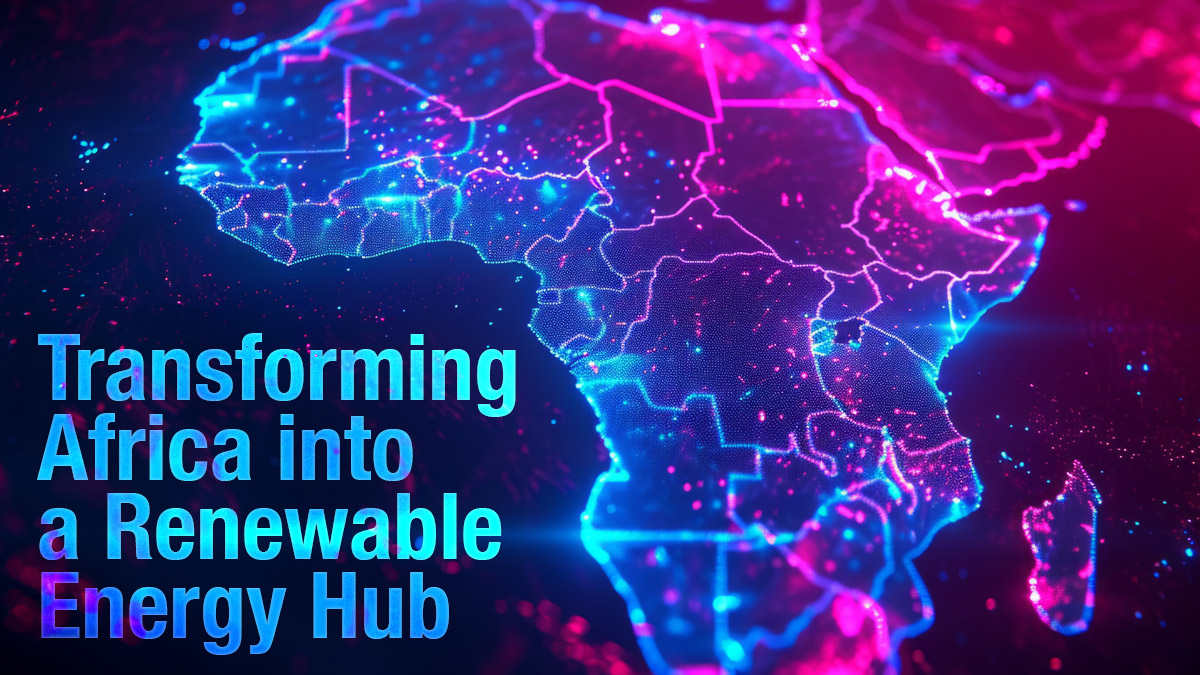In recent years, several African nations, including Morocco, Tunisia, Egypt, Mauritania, and Zimbabwe, have set ambitious goals to become hubs for renewable energy production. They are investing in vast renewable energy projects that aim to supply clean energy to Europe through underwater cables. While this endeavour holds great promise for Africa and Europe, significant financial challenges must be overcome to make these projects a reality.
The proposed underwater cable systems connecting Tunisia to Italy and Morocco to the United Kingdom signify a monumental shift in the geopolitics of energy. They are poised to transport energy generated from African renewable sources to Europe, which is seeking to reduce its dependence on Russian gas and oil. These undersea cables could become the modern-day equivalent of oil pipelines, carrying energy across thousands of kilometres.
Renewable energy sources, such as wind and solar power, are known for their intermittent and unpredictable nature. They produce energy during the day or when the wind blows but cease production at night and in calm weather. Furthermore, these sources can sometimes generate more energy than is immediately needed, leading to storage challenges. Additionally, managing peak energy demand requires swift response mechanisms.
Energy storage technologies play a crucial role in addressing these challenges and managing the energy transition effectively. Technologies range from hydroelectric systems that pump water uphill for later use to compressed air storage in depleted underground gas reservoirs and even massive battery systems capable of providing instant responses. Vehicle-to-grid (V2G) networks will also contribute by using parked cars as micro batteries to support the electrical grid.
The success of these processes relies heavily on technology, from artificial intelligence to algorithms that analyse consumption patterns and guide dynamic pricing. As with oil and fossil fuels, the geographical advantage varies for renewable energy sources. For instance, the UK and Norway may not have abundant sunlight but benefit from strong winds, while Morocco enjoys favourable geographical conditions for solar energy.
Morocco, in particular, has long seen the development of electrical interconnections as an opportunity for economic and industrial growth. The completion of an energy-importing cable system from Spain in 2019 marked the beginning of Morocco’s transition from an energy importer to an exporter.
The Morocco-UK Power Project exemplifies the future of energy transmission. This project involves laying four underwater cables, stretching approximately 3,800 kilometres from Guelmim Oued Noun in Morocco to North Devon in southwest England. It is expected to become the most extended cable system of its kind once completed, with operations beginning in the coming years and the first lightbulb expected to illuminate in 2027. This infrastructure has the potential to provide up to 3.6 gigawatts of clean energy for 20 hours a day to 7 million British households by 2030, covering up to 8% of UK domestic consumption.
In addition to continuous energy production from Moroccan solar panels and wind turbines, an energy storage facility in England will provide the necessary storage to ensure a consistent and predictable energy supply for the UK. This ensures that the UK can access energy from Moroccan solar and wind resources independently of disruptions in other European grids.
The involvement of companies like Octopus Energy, which offers innovative, dynamic pricing models, adds to the potential benefits of such projects. These companies utilise advanced technologies, including artificial intelligence and machine learning, to optimise energy usage and offer consumers cost-effective solutions.
Tunisia also plays a crucial role in developing renewable energy projects in Africa, particularly in integrating its electrical system with Europe. A significant interconnection project with Europe, connecting Tunisia to Italy, will be completed by 2025. This connection is central to Tunisia’s renewable energy development plans, allowing the country to harness solar and wind energy, reduce reliance on imported natural gas, and enhance energy security.
Furthermore, Egypt and Zimbabwe have focused on green hydrogen as a viable energy source. The vast renewable potential of Africa, coupled with expertise in electrolyser technology, has attracted international investors to develop projects based on green hydrogen production.
These initiatives demonstrate that Africa has the potential to play a pivotal role in the global energy transition, contributing to poverty alleviation and sustainable industrialisation. To unlock this potential, African nations need a comprehensive political framework that promotes a fair and inclusive energy transition. The International Renewable Energy Agency (IRENA) is working on an African Green Deal, akin to the European and American models, to create a coordinated approach that addresses regional and national peculiarities.
The key challenge remains financing. Despite the ongoing reduction in renewable energy costs, many developing countries find it challenging to secure the initial investments required for these projects; with the recent failure of COP26 to fulfil the promised annual funding of one hundred billion euros, renewable energy projects are seen as financially burdensome by some governments in developing countries. The issue is not whether renewable energy is cost-effective in the long run but how to meet the upfront costs when funds are scarce, and loans often contribute to already burgeoning foreign debt.
The reduction in renewable energy costs over the past decade is encouraging, with solar photovoltaic industrial-scale electricity decreasing by 85%, followed by solar concentration (68%), onshore wind (56%), and offshore wind (48%). This data underscores the competitiveness of renewables compared to fossil fuels.
In conclusion, while Africa’s potential as a renewable energy hub is undeniable, addressing the financial challenges remains a critical hurdle. International collaboration, innovative financing models, and a coordinated political framework are essential to harness the continent’s renewable energy potential and drive sustainable development. By overcoming these challenges, Africa can become a global leader in transitioning towards a cleaner, more sustainable energy future.

